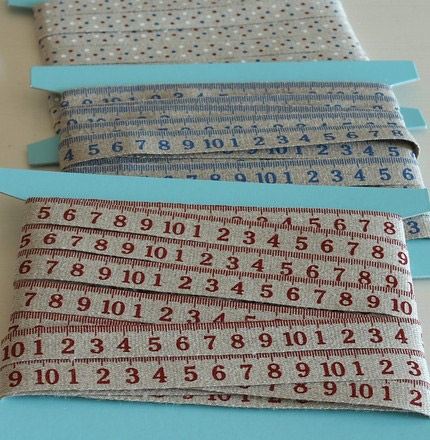Did that exciting post title get your attention? Well, it’s been consuming my attention for the past several days. As you may know, I am working on a sewing book for Chronicle Books and am actually nearing completion — hurray! Anyway, there’s been some discussion about how/if to include metric conversions. Yes, I apologize for our vastly inferior standard of measurement in the U.S., but we have given it our name and it’s ours. The customary units are quaint and familiar — it would indeed be difficult for me to hand over the yard stick.
Anyway, if you use the metric system and you sew, I need your opinion. If you don’t live in the U.S., Liberia or Myanmar, then I’m talking to you! Do you ever sew from patterns using U.S. measurements? If so, how do you make the conversions? Do you go online, use a tape measure, or actually do math? Have you ever had a pattern come out wrong due to the conversion?
Would you like to see conversions in a U.S. sewing book? Would you mind flipping to the back of the book or do you want the measurements right there on the page? Do you need all the measurements or can you figure some out on your own? My concern is that having too many measurements on the page might make you more likely to misread a number and make a mistake. But of course I don’t want to be a solipsistic American, so let me know what you think.
Pictured above: Linen Measuring Tape Ribbon from Cotton Blue.


I am swiss. As I knit often from english and american patterns I am getting a bit used to the inches (and I have a doublesided tape ruler). However the metric system is absolutely more simpe and logic to my mind. I would prefer to have both, but would not take that into consideration when choosing to buy or not your book. Hey! I have even bought japanese sewing and knitting books (those have metric measures btw.)
I also think that asking this question on the internet will distorse the results. Most of the person reading blogs will be used to find conversions online. The “unwired” audience that your book will have to reach may well be less flexible and adaptable. I would keep that in mind while deciding which way to go. 🙂
Oh, and if you put some metric measurements, I am afraid you will have to put them all…
I would LOVE to see metric conversions – it’s quite frustrating to me that there are so many amazing American quilting/sewing books available, but I have to do the extra work of converting patterns before I can use them. I do buy American books despite this, but the inclusion of metric measurements would definitely make me much more likely to buy a book that had them over one that didn’t.
I live in the UK and although my tape measures are double-sided, my quilting ruler and cutting mat are metric so I need to convert all imperial measures to metric before cutting. A generic imperial/metric conversion chart wouldn’t help me a great deal as I’d still have to do all the sums, but including metric measures in the body of the pattern, a side box, or even a section at the end of the book would be terrific.
Iam Canadian and we never learned Imperial measurements. I remember my Kindergarten class being the first class to start with the meteric system(this was the early 1970s). Sewing, knitting and cookery books that do not have meteric drive me crazy. I love it when the author has taken the time to give both measurements.
I’m sofia from Portugal (tiny country in Europe). I find it dificult to work with your yard system, usually I use the world converter (on line) but problem is the inches never make a unit cm, it´s always 15,2cm or 18,9cm (am I making any sense??? LOL)
Also, sometimes i see measurements described as 15 1/4 ”, while we would use something like 15,25…Well, maybe it’s just me, but it’s not easy, no no no.
Hugs, Sof
I live in Singapore, and yes, i’ve had projects messed up due to measurements. Almost all the quilt related stuff here are imported from the US, so I have no problems with non-metic system. All my cutting mats and rulers and measuring tapes are non-metric. Actually, I have not seen a self-heal cutting mat in metric – that would be so useful for Japanese patterns. 🙂
I agree with Sofia from Portugal, the conversion never round up properly. So yes, both measurements in your or a book would be wonderful!
Here Ilona from The Netherlands.
I usually find conversions online, and I also have a ruler with both systems. I’m already quite used to your measurements, but as mentioned above already, it often doesn’t match a nice metric measurement, which might mess a pattern up. Need to improvise sometimes because of that.
It really would be helpful if both measurements were in your book, something like you see when knitting they state the stitches and the other sizes’ stitches between (…-…).
Think it would sell quite a bit more books if you did so!
Having a conversion right there would be great, especially for us new sewers who are still learning! Maybe you could put the conversion in a different font or highlight it to make it easier to decipher?
I’m in England, so grew up with Imperial, then learned Metric at a later date. I can flick between the two systems easily enough, but prefer Imperial measurements as I still find it much easier to visualise sizes in inches rather than centimeters.
I would love to see the metric system in your book. Maybe not flipping all the way to the back, but have a flip over cover or a fold out page in the book that you open while reading the pattern? Could save work and numbers in your pattern and is very easy to use. Just not sure what your publisher thinks 😉
Great idea to ask and check what people think about it!
I´m from Brazil and usually I make the Math all the time, but it´s not very easy – I think would be perfect if you could write in both systems!
Thank you for worry about not yard system sewers!
Good luck! I love your projects!
(sorry about my poor English)
I would really appreciate a metric conversion somewhere in a book or on a pattern. I am from London England and often use American patterns for both sewing and knitting. Knitting is not so difficult as you always have a tape measure when knitting but sewing I do find the Yard vs metre confusing. I have made a conversion chart which I keep in my organiser but a chart in the book would be best.
Great site and good luck with the book.
I am a (slightly older) Canadian. I was school-age when Canada moved to metric, so I’m familiar with both, although I tend to use Imperial as a reflex. I’m fairly relaxed about working in either system. Life is so much better when authors include both measurements. PLEASE take the time to make the conversions and include them both on the same page of the instructions/patterns. If you are worried about confusing readers, please use different fonts or coloured text to distinguish between the two measurements. Thank you, I’ll look for your book when it comes out. Good luck with it.
Metric system, please!
Hi
I presently reside in the US but grew up in Australia. I am of an age that metric had just been introduced when I started my schooling so I am more comfortable with the logic of metric . However I was surprised that when working with art teachers from The London Institute a few years ago they insisted on imperial measurements, and now I must help my daughter with her math homework here in the US. I cannot do conversions mentally , it takes time. I think that if you intend to market a book to a global audience it is a good thing to acknowledge that there is another system of measurement so thank you for asking the question. Having the conversions on a jacket flap that can be easily consulted is a good suggestion, but having the alternative metric on each pattern would be ideal.
I have a theory that the US simply can’t afford to change and that the idea could be as horrifying to it’s citizens as the debate over healthcare reform. Just sayin’